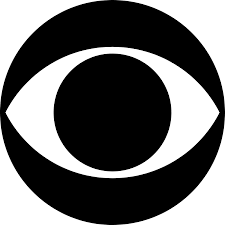The constant churn of media mergers now keeps these companies indebted to the largesse of Trump, who abuses federal agencies by using them as tools to enhance his power.
With American authoritarianism in ascendency, we are witnessing the decline of independence in traditional outlets of American broadcast news. The three original networks have all taken actions to placate the President, who is on a continuous retribution crusade. The weapons of choice to unsheathe the power of the federal government is the approval of major corporate mergers by the Federal Trade Commision or the Department Of Justice, and regulation of airwave use through the Federal Communications Commission. The issue often arises because mergers and transfers of ownership have been common in the mass media for decades.
For a time in the middle of the last century the three original networks were content with espousing the position that they existed for the public good. The best owners thought of broadcasting as something like a civil necessity: a logical extension of the view, since they owned many of their affiliates. Owners were willing to accept modest profits in favor of being good corporate citizens. Though the first form of the Federal Communications Commission was initially set up to bring order to the rush of broadcasters to use various frequencies, it would also seek guarantees from station owners that the public airwaves would be used to contribute to the public good. (But to be clear, network affiliates with access to the airwaves need to be licensed. But as with other American media outlets, networks themselves do not need government licenses to operate.)
By the 1980s, the networks were rapidly turning into banks for investors, while divesting many of their entertainment and publishing assets. Key managers are now more likely to come with a financial rather than production background. Mergers are second nature to them.
Corrupting the FCC
Until now no one understood that the FCC should have any claims on an affiliate because the Chair of the agency did not like their network’s politics. The agency was never meant to censor broadcast content, as Brendan Carr did last month in forcing Disney/ABC to silence Jimmy Kimmel Live! A better and different tradition was set by FCC Chair Newton Minow in the early 60s when he urged broadcasters to be less timid by producing nationally significant programming.
As we know, late night host Jimmy Kimmel made fun of the President, and more recently made brief comments about the assassination of Republican Charlie Kirk. That was enough for Carr to have Kimmel silenced, lest ABC’s affiliates have their licenses revoked.
The Chinese cannot offer negative comments about President Xi in their broadcasts. Nor can Russian entertainers freely challenge President Vladimir Putin. These leaders maintain power on their own artificial islands of enforced adoration. In his own way Trump has joined them in seeking to crush oppositional speech, abusing the role of the FCC and other federal agencies, and in defiance of the right of Americans to exercise their First Amendment rights.
 The heat of political retribution also lays behind the decision of CBS—once a network with impressive independence—to cancel the popular Late Show with Stephen Colbert. Colbert has the best ratings of all the competing shows in the evening daypart. It also remains to be seen if the Comcast-owned NBC, with its own late-night hosts and a Trump accusation that they peddle “fake news,” will resist. David Ellison, the new head of Paramount Skydance, including CBS, is reportedly working with his multibillionaire father to also gain control of Paramount, Warner Brothers, and CNN. The Ellisons’ wealth comes from the Oracle empire, illustrating how American tech companies pile up media assets, making billions to spend on even more federally approved mergers.
The heat of political retribution also lays behind the decision of CBS—once a network with impressive independence—to cancel the popular Late Show with Stephen Colbert. Colbert has the best ratings of all the competing shows in the evening daypart. It also remains to be seen if the Comcast-owned NBC, with its own late-night hosts and a Trump accusation that they peddle “fake news,” will resist. David Ellison, the new head of Paramount Skydance, including CBS, is reportedly working with his multibillionaire father to also gain control of Paramount, Warner Brothers, and CNN. The Ellisons’ wealth comes from the Oracle empire, illustrating how American tech companies pile up media assets, making billions to spend on even more federally approved mergers.
The founder of CBS in the 1920s was also the son of a rich father who happened to be in the cigar business. But the constant churn in media companies has taken an ominous turn in how they now actively seek the largesse of the current President, who uses federal agencies as personal tools to enhance his power. It is hard to overestimate the breach of the traditional American separation–imperfect, to be sure–between media owners and specific administrations.
In what is a dangerous and new trend, our tech industries increasingly seem to have capitulated specifically to the President’s efforts to reign in programming that he might find offensive. We could extend the analysis to Apple Computer, Google, and a number of “big tech” companies. There are accusations, for example, that Google is resisting A.I. summaries of news reports speculating on the President’s health.
No nation completely escapes tensions between their powerful media businesses and governments that would like to have more content control. But the protection of freedom of speech and of the press is guaranteed by the Constitution. Right now, this bedrock idea gets only lip service from the White House, and seems to have no vocal defenders even among the digital giants.

